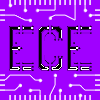If you want to make better grades, improve your comprehension, and spend less time studying, this Schaum's Outline is for you! It's an easy-to-use study tool to help you master circuit analysis and ace your tests! Students love Schaum's Outlines! Each and every year, students purchase hundreds of thousands of the best study guides available anywhere. Students know that Schaum's delivers the goods--in faster learning curves, better test scores, and higher grades!
DOWNLOAD
Sunday, August 29, 2010
Wednesday, August 11, 2010
CCNA Network Fundamentals Presentation Files
Reviewing for Cisco exam?
Reading the entire module in the network academy would really need a lot of time and effort. Good thing the CCNA Network Fundamentals Presentation Files are ready for download!
Part 1 contains chapters 1 to 4, 10 and 11 while part 2 contains the rest of the chapters.
Reading the entire module in the network academy would really need a lot of time and effort. Good thing the CCNA Network Fundamentals Presentation Files are ready for download!
Part 1 contains chapters 1 to 4, 10 and 11 while part 2 contains the rest of the chapters.
Non-Coplanar Force System
Here are some useful and helpful lectures I found for Non-Coplanar Force System:
Introduction to Non-Coplanar Force System
Applied Mechanics By Hervey F. Girvin
Introduction to Non-Coplanar Force System
Applied Mechanics By Hervey F. Girvin
Labels:
3d,
engineering mechanics,
force system,
Lectures,
mechanics
Tuesday, August 10, 2010
Vector Differentiation
In calculus we compute derivatives of real functions of a real variable. In the case of functions of a single variable
y = f(x)
we compute the derivative of y with respect to x. In the case of a function of several variables
y = f(x1, x2, ... , xn)
we can compute the derivative of y with respect to any one of the independent variables, viewing the others as fixed.
In vector analysis we compute derivatives of vector functions of a real variable; that is we compute derivatives of functions of the type
F(t) = f1(t) i + f2(t) j + f3(t) k
This function can be viewed as describing a space curve. Intuitively it can be regarded as a position vector, expressed as a function of t, that traces out a space curve with increasing values of t. Expressed in different notation it is the function
R(t) = x(t) i + y(t) j + z(t) k
R(t) = x(t) i + y(t) j + z(t) k
Sunday, August 8, 2010
Bipolar Junction Transistor
The bipolar junction transistor (BJT) is a three-element (emitter, base, and collector) device made up of alternating layers of n- and p-type semiconductor materials joined metallurgically. The transistor can be of pnp type (principal conduction by positive holes) or of npn type (principal conduction by negative electrons), as shown in Fig. 3-1 (where schematic symbols and positive current directions are also shown). The double subscript notation is utilized in labeling terminal voltages, so that, for example, Vbe symbolizes the increase in potential from emitter terminal E to base terminal B. For reasons that will become apparent, terminal currents and voltages commonly consist of superimposed dc and ac components (usually sinusoidal signals).
Schaum's Outline of Electronic Devices and Circuits
This updated version of its internationally popular predecessor provides and introductory problem-solved text for understanding fundamental concepts of electronic devices, their design, and their circuitry. Providing an interface with Pspice, the most widely used program in electronics, new key features include a new chapter presenting the basics of switched mode power supplies, thirty-one new examples, and twenty-three PS solved problems.
Master the fundamentals of Electronic Devices and Circuits with Schaum’s--the high-performance study guide. It will help you cut study time, hone problem-solving skills, and achieve your personal best on exams and projects!
DOWNLOAD
Password: www.elektrotekno.com
Master the fundamentals of Electronic Devices and Circuits with Schaum’s--the high-performance study guide. It will help you cut study time, hone problem-solving skills, and achieve your personal best on exams and projects!
DOWNLOAD
Password: www.elektrotekno.com
Saturday, August 7, 2010
Diode Applications: Clamping Circuits
A clamper is a circuit that is designed to shift a waveform above or below a dc reference voltage without altering the shape of the waveform. This results in a change in the dc average of the waveform.

A clamper with its input and (ideal) output waveforms.
Both of these statements are illustrated in the figure below. (The clamper has changed the dc average of the input waveform from 0 V to +5 V without altering its shape.)

A clamper with its input and (ideal) output waveforms.
Labels:
clampers,
clippers,
diode,
ece,
Electronics,
electronics engineering,
Lectures
Diode Applications: Clipping Circuits
Clippers or Diode Limiters are networks that employ diodes to "clip" away a portion of an input signal without distorting the remaining part of the applied waveform. For a clipping circuit at least two components—an ideal diode and resistor are required and sometimes a dc battery is also employed for fixing the clipping level. The diode acts as a closed switch when forward biased and an open switch when reverse biased. The input waveform can be clipped at different levels by simply changing the voltage of the battery and by interchanging the positions of the various elements.
Labels:
clampers,
clippers,
diode,
Electronics,
electronics engineering,
Lectures
Friday, August 6, 2010
Venn There, Done That
A Venn Diagram is a picture that is used to illustrate intersections, unions, and other operations on sets.
The Venn diagrams on two and three sets are illustrated above. The order-two diagram (left) consists of two intersecting circles, producing a total of four regions, ,
,  ,
,  , and
, and  (the empty set, represented by none of the regions occupied). Here,
(the empty set, represented by none of the regions occupied). Here,  denotes the intersection of sets
denotes the intersection of sets  and
and  .
.
The Venn diagrams on two and three sets are illustrated above. The order-two diagram (left) consists of two intersecting circles, producing a total of four regions,
Labels:
advanced algebra,
algebra,
discrete math,
Lectures,
logic,
sets,
venn diagram,
venn diagram activities
Thursday, August 5, 2010
Philippine Republic Act 9292: ECE Law
The Republic Act 9292 or the "Electronics Engineering Act of 2004” is an amendment of the previous RA 5734. The new law has brought about debates from ECE students and professionals from the Electronics industry.
There were few major changes made on the law, such as the new board exam rules and the classifications of e licensed to Electronics Engineers (ECT, ECE and PECE).
Electronics and Communications Engineering would now be called Electronics Engineering. However, Communications would still be part of the ECE curriculum. Also, you need to pass the licensure exam first before you can affix the ECE title on your name.
There were few major changes made on the law, such as the new board exam rules and the classifications of e licensed to Electronics Engineers (ECT, ECE and PECE).
Electronics and Communications Engineering would now be called Electronics Engineering. However, Communications would still be part of the ECE curriculum. Also, you need to pass the licensure exam first before you can affix the ECE title on your name.
Labels:
board exam,
ece,
ece law,
ece philippines,
electronics engineering,
news,
prc,
RA 5734,
RA 9292
Sunday, August 1, 2010
PRC List of Allowed Calculators
Examinees are allowed to bring only one non-programmable calculators during the board exam.
Is your calculator allowed?
Here is the complete and updated list of allowed calculators to be used in Licensure Examinations, according to the Professional Regulation Commission.
Is your calculator allowed?
Here is the complete and updated list of allowed calculators to be used in Licensure Examinations, according to the Professional Regulation Commission.
Labels:
board exam,
calculator,
list of allowed calculators,
news,
prc
Subscribe to:
Posts (Atom)












